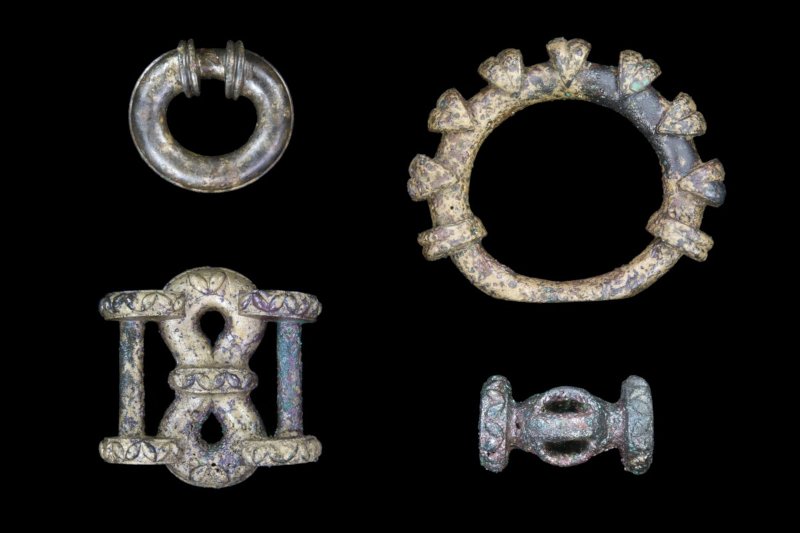Iron Age Religion and Beliefs
Tracking down Iron Age religion is far from easy. Pre-Roman Britain was essentially non-literate, meaning that any evidence for Iron Age Britons’ beliefs concerning the divine world is inevitably shadowy, ambiguous and – perhaps – more subjective than for Roman Britain, where we have written sources.
According to the Roman writers who provide the earliest written accounts of prehistoric religion, late Iron Age worship focused not on built temples but on ‘sacred groves’, the haunts of Druids, whose name means ‘oak-knowers’.
Beliefs and rituals are likely to have been woven into everyday activities such as farming, cooking and metalworking. Archaeologists rarely find remains of Iron Age temple buildings or places of worship. Offerings were deposited in homes, fields, hilltops and rivers and could come in the form of single objects, sacrificed animals or ‘hoards’. These buried groups of objects ranged from everyday tools to gold and silver jewellery. While some may have been buried for safekeeping, most were probably offerings to the gods.
Burying or cremating the dead was unusual in Early Iron Age Britain. Instead, bones are found, not in graves, but were placed in pits or ditches, suggesting that when people died their body was laid out to rot away. This is a process called excarnation (full exposure of the body to the elements resulting in the de-fleshing of the body). It was a continuation of practices seen throughout the Bronze Age.
At some sites, evidence for exhumation (initial burial with exhumation years later) and partial exposure (in pits, followed by retrieval of decomposing body parts) has been found. Some bones, probably those of special people, were then buried around settlements. This type of burial (especially in doorways) may be testament to the reverence in which Iron Age people held their ancestors, or a grizzly signalling of dominance (if the bones were those of an enemy).
For a more comprehensive survey of the various funerary practices download the PDF below, from Wessex Archaeology:
The rare graves we do find (from the Late Iron Age) provide valuable insights into the lives of individuals and communities. In Cornwall, the dead were buried in stone lined graves and in East Yorkshire (c. 400-100 BC) the dead were buried in graves arranged in long cemeteries. Most people in this period were buried with no or only a few objects, such as a simple pot or brooch, but in a small number of the Yorkshire graves, people were even buried with chariots.
At the very end of the Iron Age, there is evidence in south-east England (c. 100 BC until after 43 AD) that the dead were cremated. This may have been the consequence of adopting practices which were commonly employed across the channel on the European mainland.
Weighing just over one 1kg, this neck-ring or ‘torc’, found in Snettisham, Norfolk, is made from 64 twisted wires, with hollow terminals cast onto the ends. Known as the ‘Great Torc’, it is one of the most elaborate golden objects made in the ancient world and rivals pieces by contemporary Roman, Greek and Chinese goldsmiths. Torcs likely had a spiritual symbolism, and it is perhaps for this reason depictions in art of Celtic gods often show them wearing or holding torcs. Perhaps the most famous examples can be seen in the Gundestrup Cauldron.
© British Museum
In 2014 archaeologists excavating at Burrough Hill, an Iron Age hill fort in Melton Mowbray, Leicestershire, discovered a hoard of rare decorated bronze fittings from a chariot. Found at the bottom of a large pit, the Burrough Hill hoard consists of twenty-two items including linch pins, terret rings and iron tools. The pieces had been gathered together in a box, before being placed in the pit and burned, possibly during a religious ceremony.
© British Museum
Whilst evidence for burials is rare, we do find that people increasingly cast valuable items – weapons, metalwork, even gold – into rivers, pools and springs, apparently as sacrifices to water gods, in a telling continuation of Bronze Age practices.
A little more context can be found in this article, from Current Archaeology:
This topic remains hard to grasp and, perhaps, unknowable. For a measured and interesting discussion on beliefs and practices, with Ronald Hutton, listen to the podcast below:

